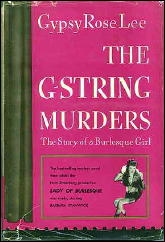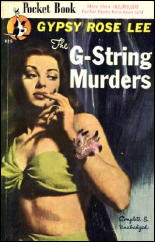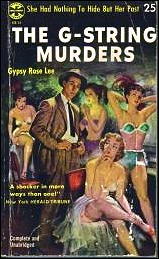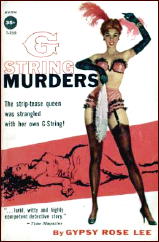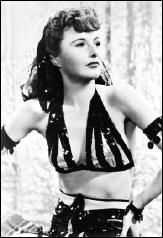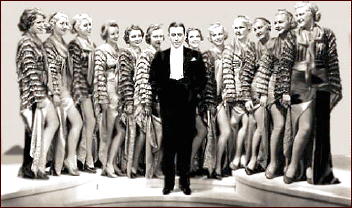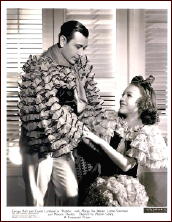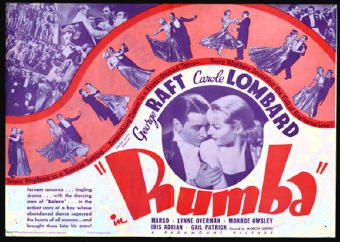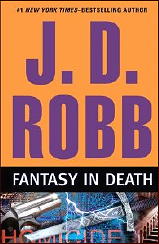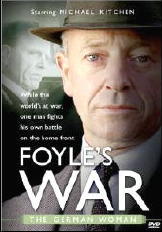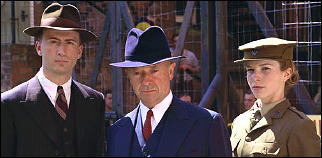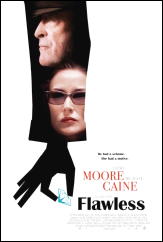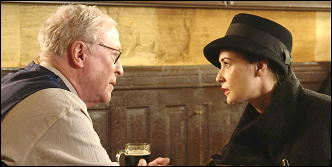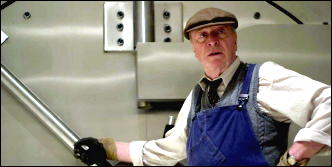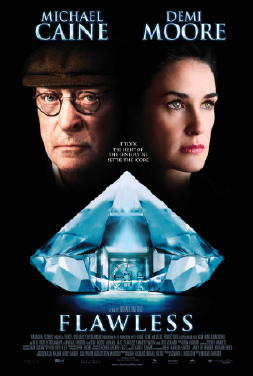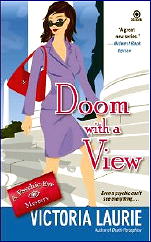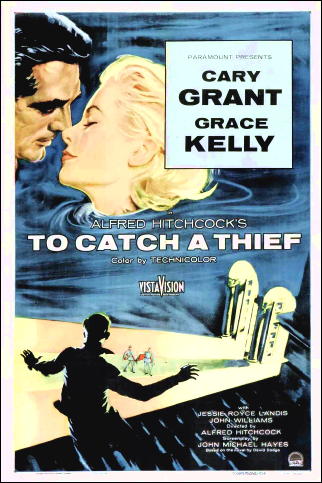Reviewed by DAVID L. VINEYARD:

DAVID DODGE – To Catch a Thief. Random House, hardcover, 1952. Reprint paperback: Dell #658, 1953. Film: Cary Grant, Grace Kelly, Jessie Royce Landis, John Williams, Charles Vanel, Brigitte Auber. Screenplay: John Michael Hayes. Cinematography: Robert Burks. Directed by Alfred Hitchcock.
*Spoiler Warning* (As if anyone reading this doesn’t know the ending.)
The
agents de police came for John Robie sooner than he expected them.
It was hot, a still summer evening in August. Crickets sawed at their fiddles in the grass, and a bullfrog who live in a pond at the bottom of the garden was sounding an occasional bass note. John was burning letters in the fireplace when the crickets and then the bullfrog stopped.
For whatever reason, American writers in general haven’t fared as well as the British when it comes to international adventurers and jewel thieves (though one of the greatest of them all was Louis Joseph Vance’s Michael Lanyard, the Lone Wolf, and American Jack Boyle gave us Boston Blackie), so it is only fitting that one who did was the cosmopolitan David Dodge, who knew the Riviera like the back of his hand.
Dodge was well known for his tales of CPA slash detective Whit Whitney and South of the Border private eye Al Colby when he wrote this, but I don’t think most readers were ready for an American who did the whole Riviera scene as suavely as any Brit.
He also had a good ear and feel for rogues, slightly bent heroes who might have to think a bit before doing the right thing.
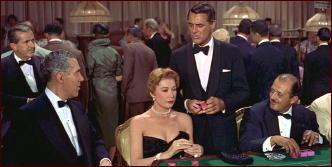
Somehow he managed to present them flaws and all as real human beings and not sociopathic thugs or emotionless robots. You tended to identify with and root for a Dodge hero without feeling guilty about it.
I won’t go into a lot of plot detail. Almost everyone reading this has likely seen the Alfred Hitchcock film (and if you haven’t, stop now, find it, and see it — it’s one of the best pictures of its kind ever made and unfairly overlooked by some because it does what it does so effortlessly) and knows the basic story. John Robie, an expatriate American living on the Riviera was once the infamous pre-war jewel thief known as Le Chat, the Cat to the world press.
Captured and sentenced just before the war Robie and his fellow crooks — many friends from his career as a circus aerialist (*) — are freed from prison by a bomb and join the Resistance to fight the Nazi occupation using their criminal skills. As a result, after the war they receive full pardons. Robie salted away his profits, bought a villa, and retired to grow his roses — even though some of his friends urged him to resurrect the Cat.
But someone has done just that, and the police are sure Robie is up to his old tricks. He escapes the police, contacts a Lloyds insurance investigator, and armed with a list of the most valuable targets begins to hunt the new Cat.
Meanwhile he finds himself falling for a headstrong American woman whose mother is on the list of the most likely victims and facing the enmity of his old friends — some of whom resent the renewed police pressure the Cat has brought on them, some of them who may be working with the new Cat.

What I want to concentrate on here are the few differences between the novel and the film. They aren’t as many as usual, but never the less make for an interesting contrast of novel into film.
The novel opens as does the film with John Robie (Cary Grant) eluding the police via an escape plan left over from his days as the Cat. He goes underground and contacts some of his old ‘friends,’ including the sexually precocious daughter of one of them who has long had a crush on him.
As in the film he is captured, but the police reluctantly have to let him go. Having met the Lloyds insurance man, he contacts him and convinces him to take a chance on Robie’s innocence and join in the hunt for the new Cat. Posing as an American businessman he checks into the Hotel Midi and sets out to get close to American heiress Frances Stevens (Grace Kelly), who doesn’t wear jewelry, and her mother (Jessie Royce Landis)who clearly does.
Complicating things in the book is his desire to avoid hurting his honest friend Paul, who has trusted him. The character doesn’t appear in the film.
Other than some small differences the book is very close to the film until the end, when there is quite a bit of variation. As in the film Robie sets a trap for the Cat and a man is killed, but Robie knows that the man, the father of Danielle (Brigitte Auber), cannot be the Cat because he was crippled during the war. And so he has to go to the rooftops in order to corner the real Cat.
But the police aren’t interested in his theory and if he is caught on a roof at a robbery it could mean a lifetime in prison or death. Still, he convinces Francie to help him (in the book Paige, the insurance man has already paid off and given up) trap the new Cat.
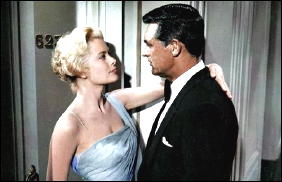
In the book — Robie’s honest friend Paul has fallen in love with Danielle, and Robie has to not only capture the Cat, but when he does, he has to return the jewels and save the new Cat from paying for her crimes all while avoiding the suspicious policeman Lepic (a good example of Dodge at play since slang for a French policeman is Le Flic).
What makes the novel worth the effort even if you have seen the film a million times (and I’m probably going on a million and one) is Dodge’s rare skills as a writer. There is nothing showy about it, but he is one of the best suspense novelists of his era, writing clean intelligent prose that reads more like the cool British thrillers of Victor Canning or Max Murray than the hard boiled American voice — though Dodge managed to stay well within that mode at the same time in a virtually unique combination of voice and style.
What holds you as you turn the pages of To Catch A Thief is not only the charm of the characters and the skill of the plotting, but the writing which is deceptively simple:
“Good afternoon Mr. Burns,” she said.
He had never seen her smile like that. He had wondered more than once what an expression of animation would do for her. Now he knew. She was alive, vital, sparkling…
“Hello, where did you spring from?”
“The diving raft. I saw you come down to the beach. I wanted to ask you a question.”
“You have good eyes if you could see me from the raft.”
“I have very good eyes.”
“What did you want to ask me?”
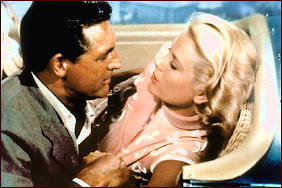
“It’s rather personal.”
“That didn’t bother you the last time we talked.”
“This is different… You’re Le Chat aren’t you?”
Later:
The distinction between thief and non thief was a state of mind… He himself was a thief because his attitude to stealing had never changed. He was retired, not reformed. He was still Le Chat, with Le Chat’s mind.
… Set a thief to catch at thief.
And still later on the rooftop of a villa waiting for the Cat:
The ivy whispered and whispered again. He could not see beyond the overhang of the rampant walk without exposing the outline of his head and shoulders against the sky. He felt his pulses beat with the intermittent movement of the climber on the vine. He began to breathe more deeply… The ivy whispered more loudly now…
Dodge wrote a number of good stand alone thrillers after To Catch a Thief (Angel’s Ransom, The Lights of Skaro, and Carambola) and they are well worth reading, including his final novel, The Last Match recently published by Hard Case for the first time. His books are sophisticated, well written, and stylish in execution and design, the international adventure thriller done to a T.
A friend of mine who was a mining engineer in Western Australia and other places that were the back of the beyond said whenever he could he traveled with a Dodge book in his few belongings. That’s about as good a tribute as any thriller writer can ask for, and one Dodge fully deserves.
(*) In case you ever wondered just how perfectly Cary Grant was cast as John Robie, in his youth Grant had been a circus gymnast.
Previously reviewed on this blog:
Shear the Black Sheep (by Steve Lewis).
